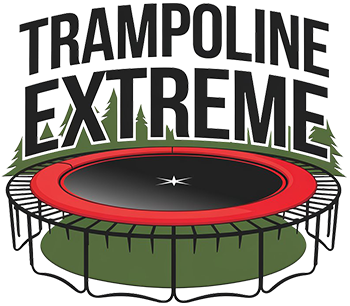Trampolines provide a fun and healthy way for families to stay active. Jumping on a trampoline offers both entertainment and a great cardio workout. Selecting the right trampoline ensures maximum enjoyment and safety for everyone involved.
Considering factors like size, shape, and safety features will help make an informed decision that suits your backyard and household needs.
Let us talk about the most important factors that require your attention.
Consider Your Space and Placement
Choosing the right spot for a trampoline plays a significant role in safety and performance. Careful evaluation of the available space ensures that jumpers have enough room to bounce freely without hitting nearby structures or objects.
Factors like ground level, clearance, and weather conditions also influence the longevity of the trampoline and the overall jumping experience.
Proper placement reduces the risk of injury and helps maintain the trampoline’s condition over time.
Measure Your Backyard
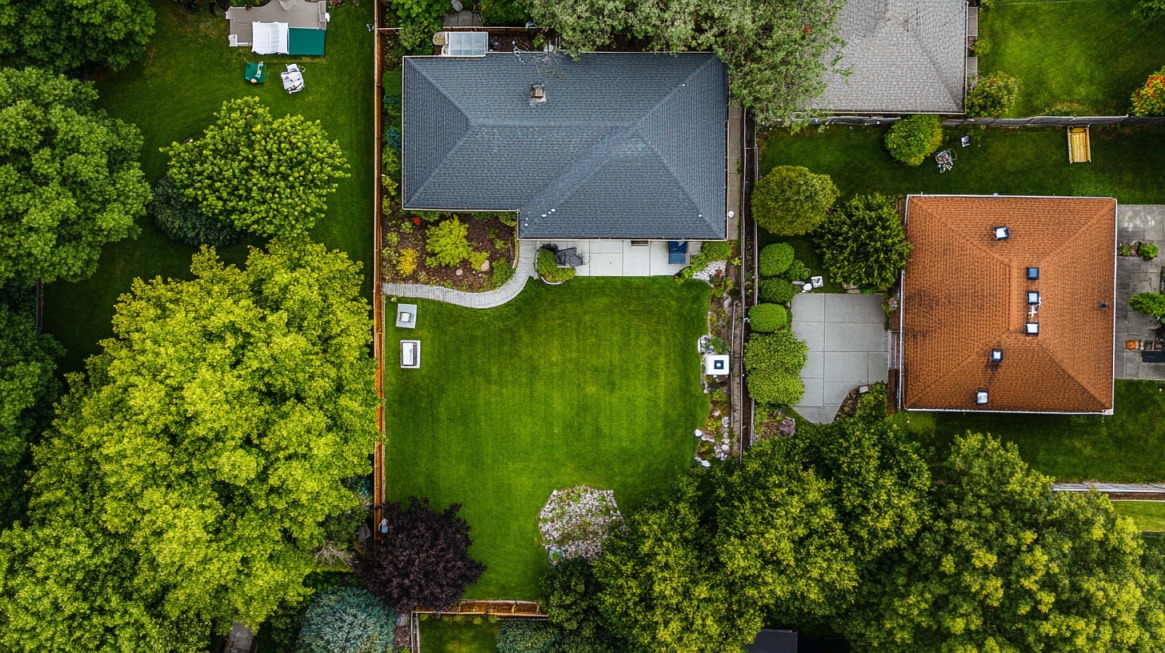
Evaluating backyard size and available space helps determine the most suitable trampoline.
Taking accurate measurements ensures that the trampoline fits comfortably and safely in the designated area.
- Perimeter clearance – Leave at least 3 feet of space around the trampoline’s edge.
- Overhead clearance – Provide a minimum of 24 feet of vertical space free of low-hanging branches, power lines, or other obstructions.
- Ground level – Install the trampoline on level ground to prevent uneven bouncing and potential tipping.
- Surface material – Position the trampoline on a soft surface like grass or wood chips to cushion landings and reduce impact on joints.
- Drainage – Ensure proper drainage in the area to prevent water from pooling under the trampoline, which can lead to rust and frame deterioration.
Measuring the backyard and accounting for all potential hazards increases safety and improves trampoline performance.
Safety Buffer
Additional space around the trampoline adds a layer of protection, particularly for springless models with flexible rods.
These trampolines have a larger bounce zone, increasing the need for extra clearance.
- Springless trampoline clearance – Allow at least 5 feet of extra space around springless models to prevent collisions with hard surfaces.
- Fence and wall distance – Ensure the trampoline is installed far enough away from fences and walls to prevent jumpers from hitting hard structures.
- Outdoor furniture and toys – Keep other objects like patio furniture, toys, and grills at least 6 feet away from the trampoline to avoid interference during jumping.
- Slope and elevation – If the yard has a slope, place the trampoline at the lowest point or level the ground before installation.
Ensuring a generous safety buffer minimizes injury risks and helps maintain proper trampoline function over time.
Weather and Environment

Environmental conditions directly affect the lifespan and safety of a trampoline.
Strong winds, intense sunlight, and moisture can weaken the frame, netting, and padding, leading to faster deterioration.
- Weather-resistant materials – Choose a trampoline with galvanized steel frames and UV-resistant padding to prevent rust and sun damage.
- Tie-down kits – Secure the trampoline with a tie-down kit to prevent movement during windy conditions.
- Shade and exposure – Place the trampoline in a shaded area to reduce UV damage to the net and padding.
- Rain protection – Use a weather-resistant cover to shield the trampoline from rain and snow.
- Winter storage – In areas with heavy snowfall, consider disassembling and storing the trampoline indoors to protect it from harsh winter conditions.
Protecting the trampoline against weather-related wear and tear ensures it remains safe and functional for years to come.
Choosing the Right Trampoline Size
Selecting the right trampoline size plays a major role in safety, performance, and long-term satisfaction.
Larger trampolines provide more jumping space and better bounce control, but they also require more backyard space and have higher weight limits.
Smaller trampolines are ideal for solo workouts and compact areas. Matching trampoline size to specific needs helps ensure the best possible experience for everyone involved.
Fitness Trampolines
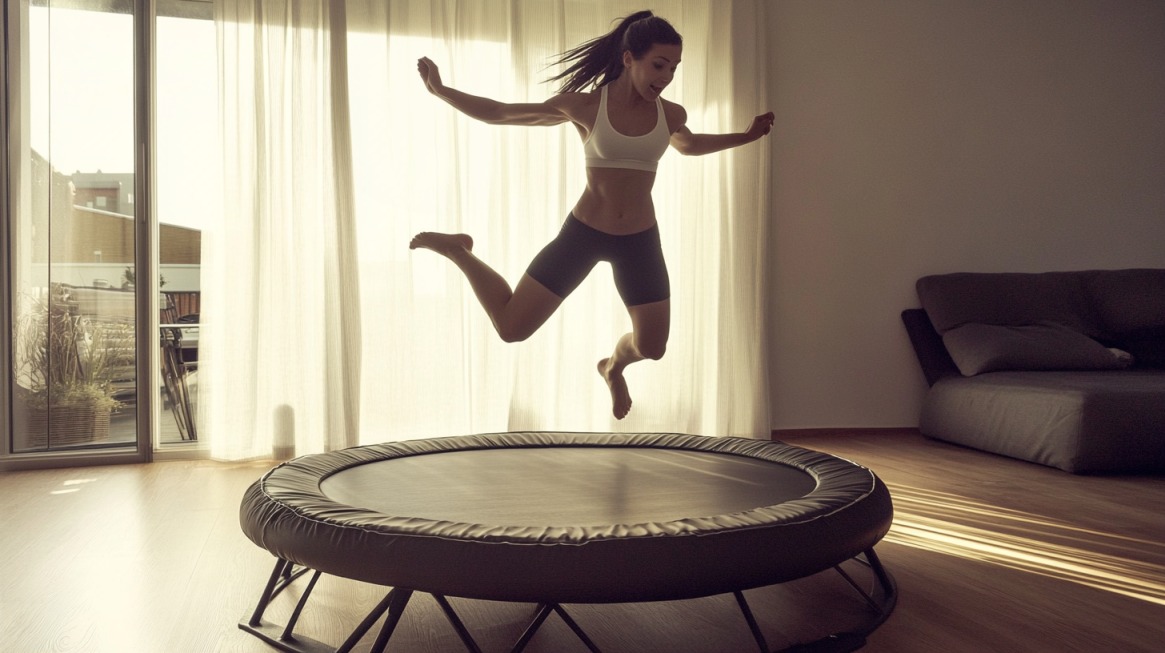
Fitness trampolines are designed for personal workouts and small spaces.
Compact and easy to store, they offer a convenient option for cardio and low-impact exercises. These trampolines are lightweight and easy to set up indoors or outdoors.
- 39 inches – Ideal for basic rebounding exercises and compact storage
- 44 inches – Provides more space for complex movements and higher bounce
Benefits:
- Improves balance and coordination
- Increases cardiovascular fitness
- Strengthens core and leg muscles
- Provides a low-impact workout suitable for all ages
Storage and Portability:
- Folding options available for easy storage
- Lightweight frames make them easy to move
- Rubber feet or protective covers prevent floor damage during indoor use
Fitness trampolines are popular for high-intensity interval training (HIIT) and core-strengthening workouts. Compact size and easy storage make them practical for home use.
Backyard Trampolines
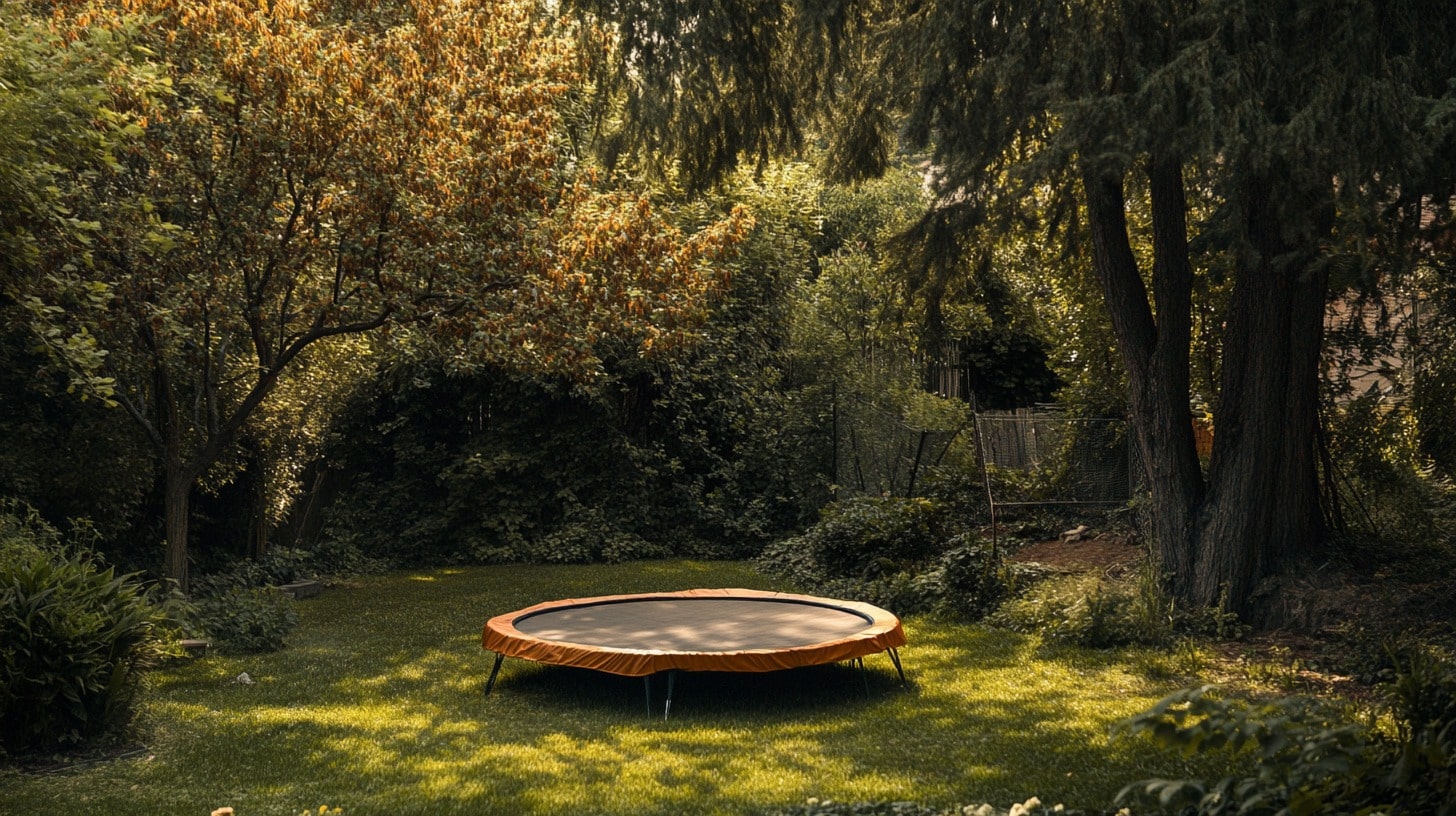
Backyard trampolines are designed for family use and provide enough space for multiple jumpers. Choosing the right size ensures enough room for safe and comfortable jumping.
- 12 feet – Ideal for small backyards and younger kids
- Suitable for one to two users at a time
- Easier to fit in limited spaces
- 14 feet – Suitable for families and multiple jumpers
- More room for tricks and movement
- Increased weight capacity for growing kids and adults
- 10’x17’ rectangle – Designed for athletic training and high-performance jumping
- Provides even bounce and better control
- Popular with gymnasts and athletes
Key considerations:
- Larger trampolines offer higher weight capacity and better bounce
- Increased size provides more room for tricks and complex jumps
- Adequate ground clearance and space around the trampoline ensure safer use
Backyard trampolines serve as a fun and functional addition to outdoor spaces, making them ideal for family entertainment and exercise.
Future Growth
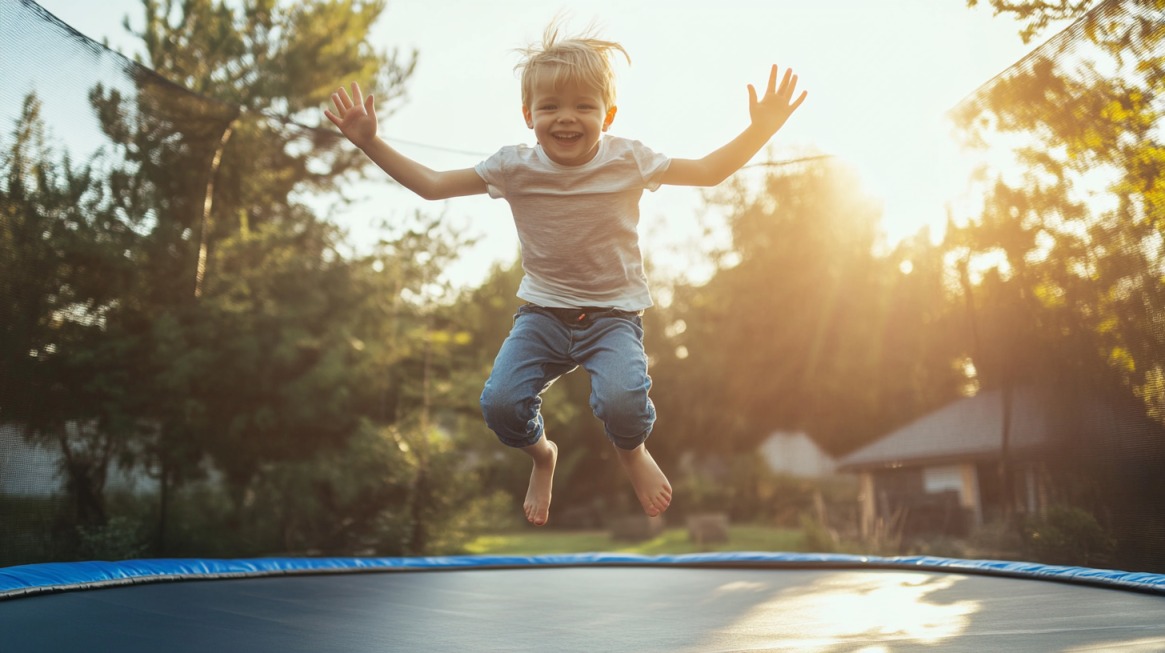
Investing in a trampoline that accommodates growing children ensures longer use and increased value over time.
Choosing a larger size with a higher weight limit allows kids to enjoy the trampoline as they get older without the need to upgrade.
- Weight capacity – Higher capacity supports growing kids and multiple users
- Size flexibility – Larger trampolines accommodate more complex movements and higher jumps
- Durability – Galvanized steel frames and UV-resistant materials withstand years of use
Benefits of planning for growth:
- Avoids outgrowing the trampoline too quickly
- Provides a long-term fitness and play solution
- Supports skill development for gymnasts and athletes
Trampolines with reinforced frames and high-quality materials last longer and provide better performance.
Planning ahead ensures the trampoline remains a valuable source of entertainment and exercise for years.
Choosing the Right Trampoline Shape
Trampoline shape significantly impacts bounce quality, control, and safety. Round trampolines are the most common, but rectangular, square, oval, and octagonal options provide distinct advantages based on user experience and intended use.
Gymnasts and athletes often prefer rectangular trampolines for their controlled bounce, while round models work better for casual backyard fun.
Square and octagonal trampolines offer more jumping space and higher weight capacities, making them ideal for larger families or experienced jumpers.
Selecting the right shape ensures a better jumping experience and minimizes the risk of injury.
Round Trampolines
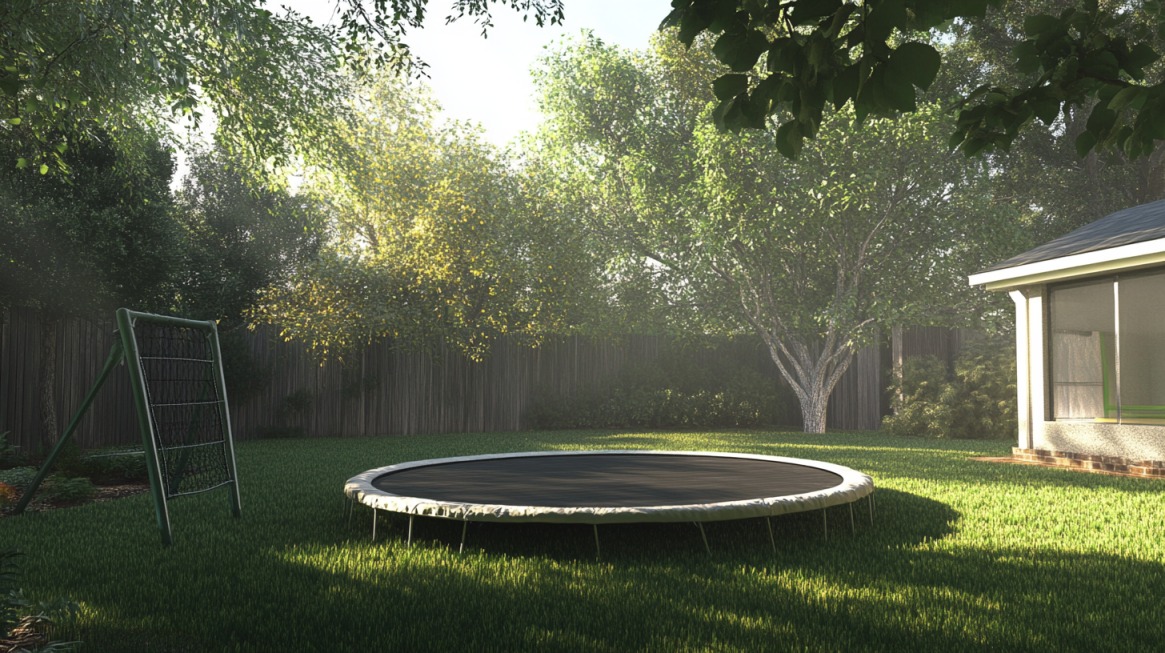
Round trampolines remain the most common option for backyard use due to their affordability and user-friendly design.
The bounce pattern directs jumpers toward the center, which helps with balance but increases the chance of collisions during group use.
- Affordable and widely available
- Directs jumpers toward the center for increased safety
- Easier for beginners and younger jumpers
- Lightweight and easier to move or store
- Increased risk of collisions in group settings
- Lower bounce compared to rectangular or square designs
- Less suitable for tricks and high-performance use
- Families with young children
- Casual jumpers looking for a budget-friendly option
- Single or two-person use
Rectangular Trampolines
Rectangular trampolines provide consistent bounce across the entire surface, making them a favorite among gymnasts and athletes.
The design ensures greater control and higher jumps, making them ideal for training and advanced tricks.
Higher cost and larger frames require more backyard space.
- Even bounce across the entire jumping area
- Better control and higher bounce
- Ideal for flips, stunts, and training
- Reduced chance of collision due to separate jumping zones
- More expensive than round models
- Larger frame requires more backyard space
- Heavier and more difficult to relocate
- Gymnasts and athletes
- Experienced jumpers looking to practice tricks
- Backyards with larger available space
Oval Trampolines
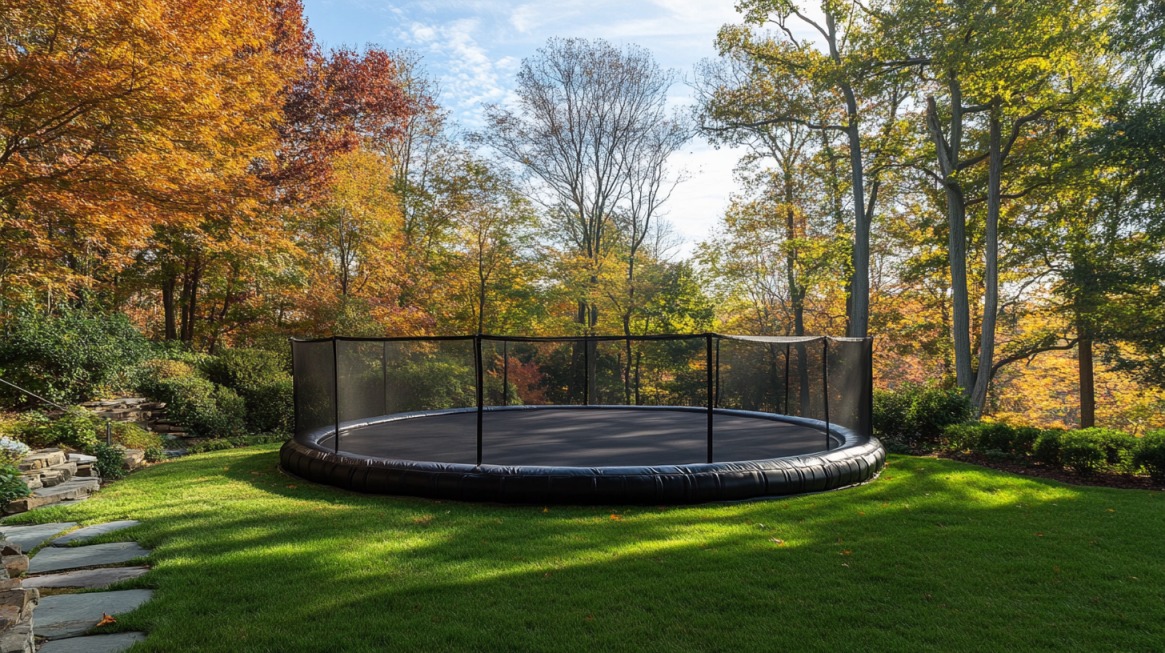
Oval trampolines combine the benefits of round and rectangular designs, offering more jumping space and controlled bounce.
The elongated shape allows for multiple jumpers without forcing them toward the center, reducing the chance of collisions.
Oval models are less common and may be harder to find.
- More space for multiple jumpers
- Controlled bounce pattern reduces collision risk
- Elongated shape allows for more movement
- Suitable for larger families
- Less common, which may limit availability
- Higher cost than round trampolines
- May require more backyard space due to the elongated design
- Families with multiple children
- Those looking for a mix of control and space
- Casual use and light athletic training
Square Trampolines
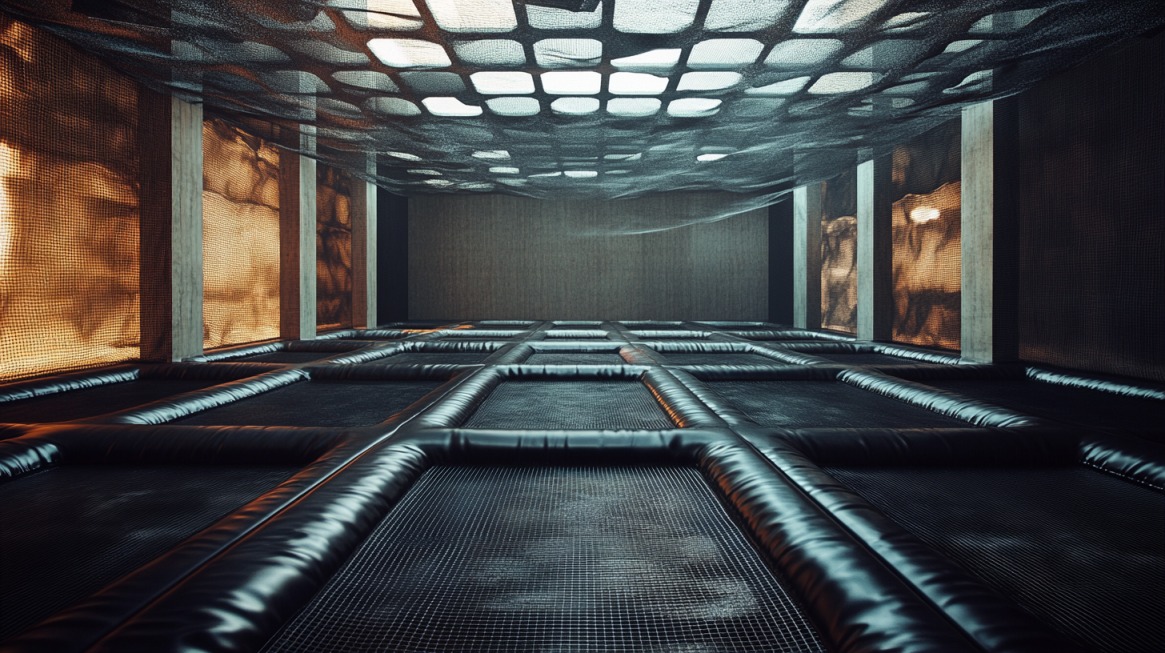
Square trampolines offer a stronger bounce and more jumping space than round or oval models.
The equal-sided design provides a balanced bounce pattern and more room for tricks. High bounce potential makes them suitable for experienced jumpers.
- Higher bounce potential compared to round and oval models
- Larger surface area for tricks and jumps
- More balanced bounce pattern
- Compact design allows for better backyard fit than rectangular models
- Higher cost than round trampolines
- Increased bounce height may require higher enclosure netting
- May feel less controlled for beginners
- Experienced jumpers looking to practice tricks
- Smaller backyards needing a more efficient shape
- Families seeking higher bounce without needing a large frame
Octagonal/Polygonal Trampolines
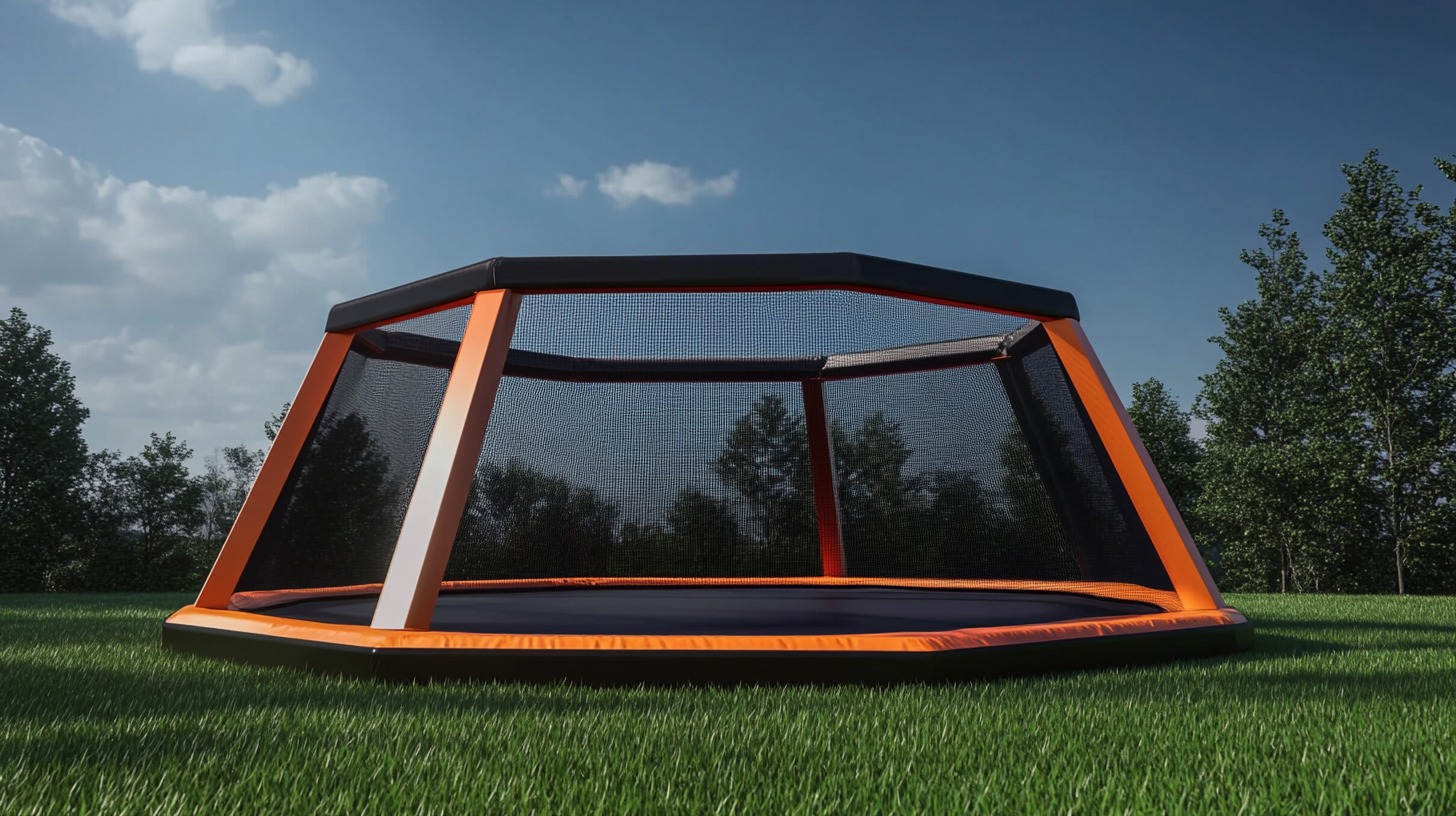
Octagonal and polygonal trampolines provide a balanced bounce with greater weight capacity.
The multi-sided design allows for even weight distribution, supporting higher jumps and accommodating multiple users. Higher cost reflects the complex frame construction.
- Balanced bounce across all sides
- Higher weight capacity for multiple users
- Less risk of structural imbalance
- Suitable for advanced jumpers
- More expensive than other trampoline shapes
- Complex frame design may require more assembly time
- Larger footprint limits placement options in smaller backyards
- Advanced jumpers seeking balanced performance
- Larger families
- Competitive or professional use
Selecting the right trampoline shape improves bounce quality, control, and safety.
Round and oval models suit casual jumpers and families, while rectangular and square designs cater to athletes and experienced users.
Octagonal trampolines deliver a balanced bounce and higher capacity, ideal for larger groups and competitive training.
Budget Considerations
Choosing a trampoline that fits your budget while meeting performance and safety expectations is essential for long-term satisfaction.
Trampolines come in a wide range of price points based on size, shape, materials, and added features.
Investing in a higher-quality model upfront can save money over time by reducing repair and replacement costs.

Basic vs. Premium Models
Price often reflects the quality of materials, weight capacity, and included features. Lower-cost trampolines provide basic functionality, while premium models offer enhanced bounce, improved safety features, and greater durability.
- Round Trampolines
- Basic models: $200–$900 – Simple designs with lower weight limits and fewer safety features.
- Premium models: $1,000–$3,000 – Higher-quality materials, reinforced frames, and advanced safety nets.
- Rectangular Trampolines
- $400–$2,000 – More expensive due to better bounce control and greater weight capacity. Popular with gymnasts and athletes.
- Oval and Octagonal Trampolines
- $500–$2,000 – Mid-range and premium models offer balanced bounce and increased jumping space. Higher cost reflects complex design and improved materials.
Factors influencing price include:
- Frame Material – Galvanized steel and thick-walled poles increase cost but improve strength and resistance to rust.
- Spring Type – High-carbon steel springs or springless designs using flexible rods increase bounce quality and safety.
- Padding and Netting – Thicker, UV-resistant padding and reinforced netting enhance safety and extend lifespan.
- Weight Limit – Higher weight capacity models cost more due to reinforced frames and stronger springs.
- Enclosure Features – Self-closing zippers, reinforced tops, and additional safety padding increase the price.
Long-Term Value
Higher-quality trampolines often justify the higher initial cost through increased durability and performance.
Spending more upfront reduces the likelihood of needing frequent repairs or replacements.
- Stronger Frames – Galvanized steel frames resist rust and withstand heavy use, maintaining structural integrity for years.
- Advanced Safety Features – Premium models include thicker padding, stronger netting, and springless designs to minimize injury risks.
- Better Bounce Performance – High-carbon steel springs and innovative designs ensure a consistent and controlled bounce.
- Weight Capacity and Size – Trampolines with higher weight limits support multiple jumpers, making them suitable for growing families.
- Warranty and Support – Premium models often include extended warranties and better customer service, adding value over time.
Spending more initially on a well-constructed trampoline reduces long-term expenses tied to repairs and replacements.
Investing in higher quality increases overall satisfaction and ensures the trampoline remains safe and functional for years to come.
The Bottom Line
Careful consideration of size, available space, and shape will guide the decision toward the right trampoline.
Safety features, such as enclosure nets and padding, enhance protection while providing a comfortable jumping experience.
Investing in a higher-quality trampoline ensures years of safe family fun.
